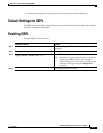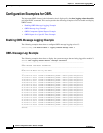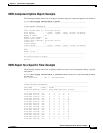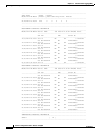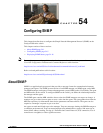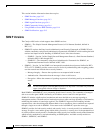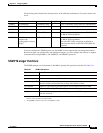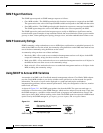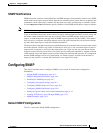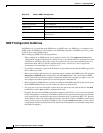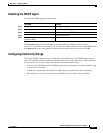
CHAPTER
54-1
Software Configuration Guide—Release 15.0(2)SG
OL-23818-01
54
Configuring SNMP
This chapter describes how to configure the Simple Network Management Protocol (SNMP) on the
Catalyst 4500 series switch.
This chapter consists of these sections:
• About SNMP, page 54-1
• Configuring SNMP, page 54-5
• Displaying SNMP Status, page 54-16
Note For complete syntax and usage information for the commands used in this chapter, see the
Cisco IOS Configuration Fundamentals Command Reference at this location:
http://www.cisco.com/en/US/docs/ios/fundamentals/command/reference/cf_book.html
Refer to related publications at this location:
http://www.cisco.com/en/US/products/ps6350/index.html
About SNMP
SNMP is an application-layer protocol that provides a message format for communication between
managers and agents. The SNMP system consists of an SNMP manager, an SNMP agent, and a MIB.
The SNMP manager can be part of a network management system (NMS) such as CiscoWorks. The agent
and MIB reside on the switch. To configure SNMP on the switch, you define the relationship between
the manager and the agent.
The SNMP agent contains MIB variables whose values the SNMP manager can request or change. A
manager can get a value from an agent or store a value into the agent. The agent gathers data from the
MIB, the repository for information about device parameters and network data. The agent can also
respond to a manager’s requests to get or set data.
An agent can send unsolicited traps to the manager. Traps are messages alerting the SNMP manager to
a condition on the network. Traps can mean improper user authentication, restarts, link status (up or
down), MAC address tracking, closing of a Transmission Control Protocol (TCP) connection, loss of
connection to a neighbor, or other significant events.



